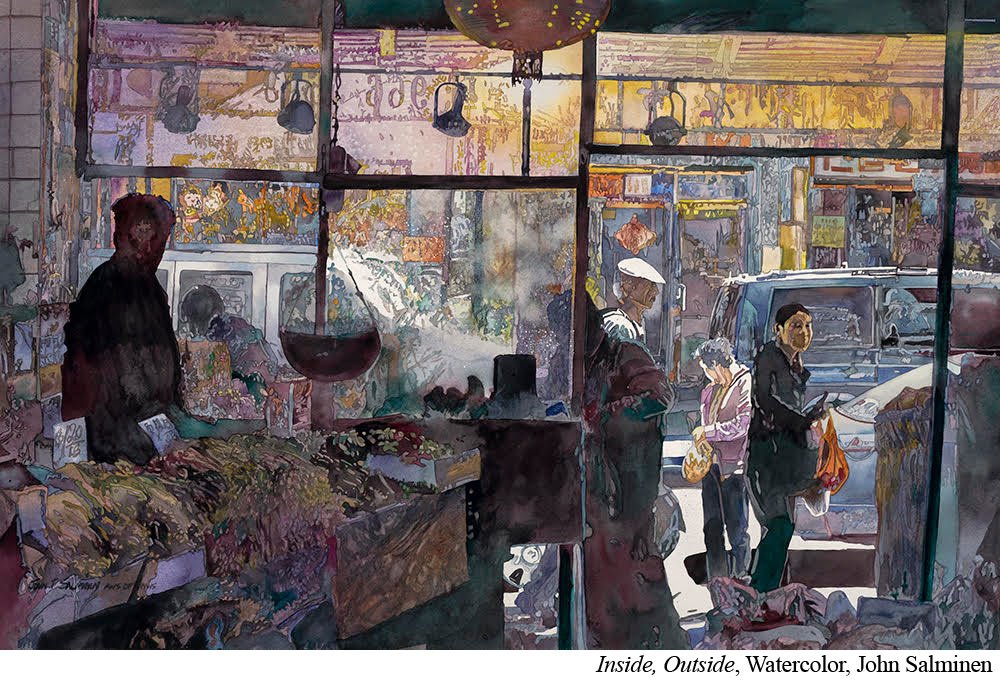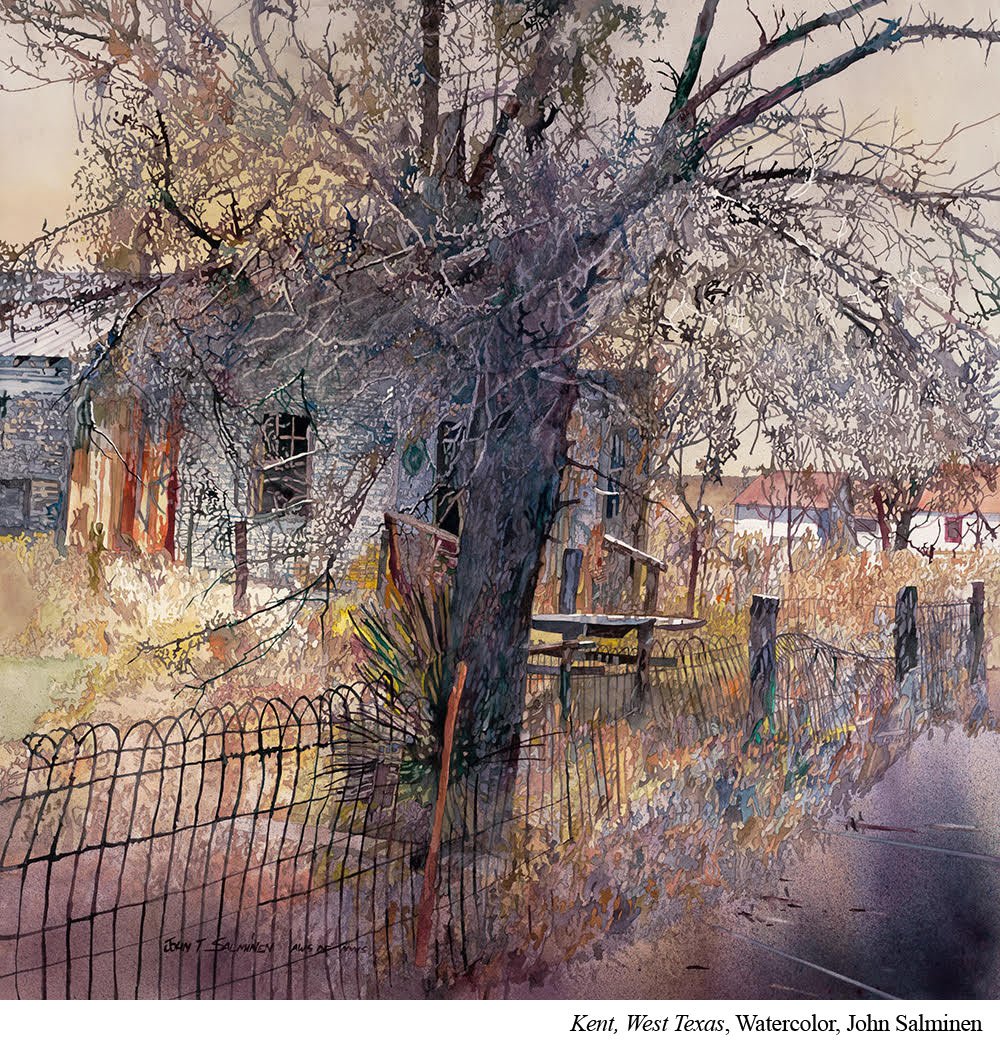How to Find the Right Watercolor Paper - Lessons from John Salminen
At one point in watercolorist John Salminen’s career, he won 25 sheets of 300 lb Arches. That’s not something a professional artist is going to let go to waste as a full sheet of Arches goes for over $20 a pop.
So Salminen (Ep.38), who works primarily on 140 lb, worked on 25 paintings with 300 lb Arches. And he liked what he saw.
“I liked handling and the fact that it's almost more like a piece of poster board than a piece of paper.”
But after he’d signed the final painting, he had a choice to make: Buy more 300 lb or go back to 140 lb.
The choice was clear. He went back to the paper he has worked on for most of his 30 year career.
A paper has to work for you and 140 lb works for Salminen.
IT HAS TO HOLD UP
Everyone’s process has different demands.
Salminen’s process can be pretty aggressive.
“I have to use a paper that stands up to lifting to scrubbing to use masking tape and snap cutters to cut out shapes right on the surface of the paper,” says Salminen, “and some of the softer papers that deliver beautiful, beautiful subtle washes are too soft for my technique.”
Salminen has found 140 lb can stand up to anything he throws at it including tools you may not think are in the basic watercolor toolkit.
“I have actually used orbital Sanders, sometimes at the surface of the paper, and Arches will stand up to this,” says Salminen.
Think through what you’re asking your paper to do in terms of lifting and scrubbing out and even the way it takes the graphite drawing. If you find it’s struggling under any of those, you might want to explore your options.
WORKS FOR YOUR DESIRED EFFECTS
So while, yes, your paper needs to be able to handle what you’re asking it to handle on a physical level, it still needs to take the paint in a way that allows you to create the visual effects you want.
Not all papers absorb paint the same. Some papers may suck up paint more quickly while others (likeYupo) never actually absorb the paint at all.
Salminen wants his work to be filled with glowing passages of light. He does this by working primarily wet-on-dry.
He doesn’t want his paint to sit too much on the surface (like Yupo) but needs to be able to lift some of it later and therefore doesn’t want it to get sucked down into the paper never to return.
140 lb watercolor paper strikes this balance for him.
Think about the techniques you use in your process. Do you primarily work wet on dry, wet-into-wet, glazing or some combination? Look for a paper that can do the best job at that.
FITS WITH YOUR PAINTING’S LIFE
A good paper works for you and your painting process, but it also has to work outside of the studio.
Even after finding a paper that works for the way he wanted it to work visually, Salminen needed a paper that fit into goals outside of the studio process itself.
Some artists like to work on 300 lb watercolor paper because it feels more substantial.
“It's almost more like a piece of poster board than a piece of paper,” says Salminen of 300 lb. This weight and substance is something he really liked very much about the paper.
But that can create problems too.
For example, Salminen ships dozens of unframed paintings a year to galleries, exhibitions and to customers.
“It's very difficult to roll 300 lb papers.”
Being able to create a beautiful watercolor on a paper that allows him to roll it, lowers the headache for him and anyone receiving the painting from a shipping logistics standpoint.
It also just lowers the cost. 140 lb paper is less expensive than 300 lb paper per sheet and sending a painting rolled up is less expensive than shipping one flat. (Especially when a painting is as large as Salminen paints.)
When finding your own perfect paper, think about what you need it to do before painting and after painting. How do you need to store your paper? Are you planning to ship it afterwards? Those will be important considerations when finding the right fit for you.
IT ALL COMES DOWN TO YOU
These are the considerations that helped Salminen find the paper that’s the perfect fit for him. And here’s the key, for him.
What every artist needs is different. Your process will be different. Your shipping will be different. Your studio set up will be different. Your use of an orbital sander will be different.
And that’s as it should be. Your perfect paper might be different.
“You have to find that paper which works the best for you,” says Salminen. “And then that becomes the best paper for you doesn't mean it's the best paper for your neighbor.”
What watercolor paper do you use and why? I’d love to hear in the comments below.
Get articles like this and new podcast episodes sent straight to your inbox by signing up for the newsletter below.




